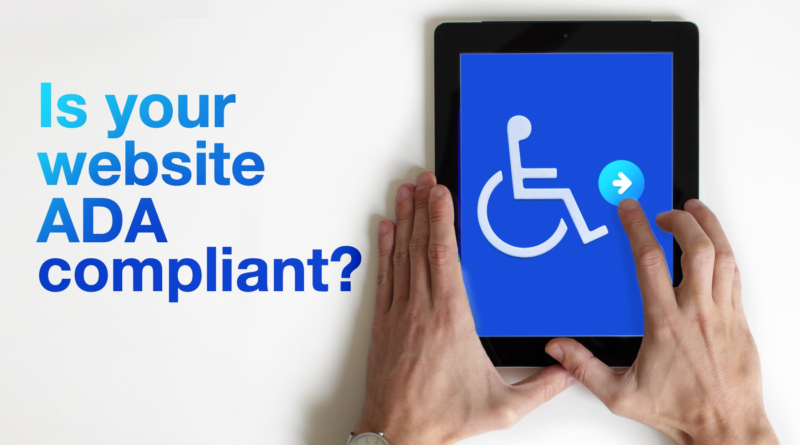What Is ADA Website Accessibility?
The Americans with Disabilities Act (ADA) is a federal legislation that forbids disability-related discrimination. In recent years, the law has been applied to the digital space, and websites are now required to be accessible to individuals with disabilities. In this article, we will discuss the importance of ADA Website Accessibility and the steps that you can take to ensure compliance and create an inclusive online experience for all users.
Top Two Reasons For Website Accessibility ADA
One of the key reasons that website accessibility ADA is important is that it ensures that individuals with disabilities have equal access to the same information and resources that are available to individuals without disabilities. This includes individuals who are blind, deaf, or have other disabilities that affect their ability to use a website. By ensuring that your website is accessible, you are not only complying with the law, but you are also making sure that your website is inclusive and user-friendly for everyone.
Another reason that website accessibility ADA is important is that it can improve search engine optimization (SEO) and increase the number of users visiting your website. Search engines, such as Google, are now taking into account website accessibility when ranking sites, and a website that is accessible to individuals with disabilities is likely to be ranked higher in search results. Additionally, an accessible website is more likely to be used by individuals with disabilities, who are a significant segment of the population. By ignoring accessibility, you may be missing out on a large potential audience.
How Do You Make Sure Your Website Is Accessible?
The first step is to conduct a web accessibility audit. A web accessibility audit is an assessment of your website that identifies any accessibility issues that may be present. The audit will typically include an examination of the code, design, and content of your website, as well as testing of the website using assistive technologies, such as screen readers. An ADA-accessible website consultant or a web accessibility expert can help you to conduct an audit and provide you with a report that outlines any issues that were found and recommend solutions for addressing them.
After the web accessibility audit is complete, you can start to make changes to your website to address any issues that were identified. These changes may include things like adding alternative text to images, using high-contrast color schemes, and providing captioning for videos. It’s important to note that making your website accessible does not mean it will look unattractive or plain, but it needs to be easy to use for everyone.
You should also ensure that your website is built and maintained in compliance with the Web Content Accessibility Guidelines (WCAG) 2.0, which provide internationally recognized standards for website accessibility. There are several levels of conformance to WCAG, and while level A is the minimum level required by the ADA, it’s recommended to aim for level AA which provides a higher level of accessibility.
Once you have made changes to your website, it is important to conduct another web accessibility audit, to ensure that the changes have been effective. And, it’s essential to have regularly scheduled website accessibility audits, to ensure the website remains compliant, even with regular updates or new pages.
What exactly is an ADA compliance audit?
An ADA website audit is a review of your digital product’s present status (website, mobile app) that identifies and reports on any accessibility concerns. The Americans with Disabilities Act is a civil rights statute that prohibits disability discrimination.
An ADA compliance audit is also a crucial step in ensuring that your website is accessible to individuals with disabilities and that you are in compliance with the law. It will help you to understand the necessary changes and can provide the path to accessibility for all.
Conclusion
website accessibility is an important issue that should not be ignored. Not only is it a legal requirement, but it also ensures that your website is inclusive and user-friendly for everyone, regardless of their abilities. By conducting a web accessibility audit, making changes to address any issues that are identified, and maintaining compliance with WCAG 2.0, you can ensure that your website is accessible to all users.



